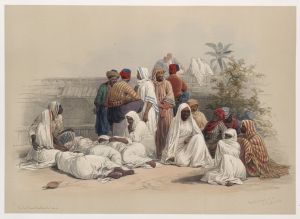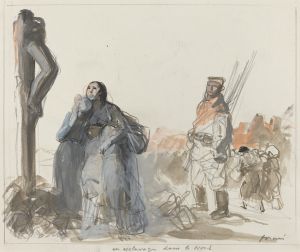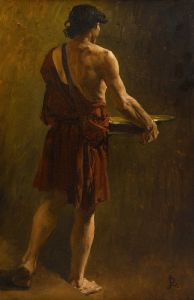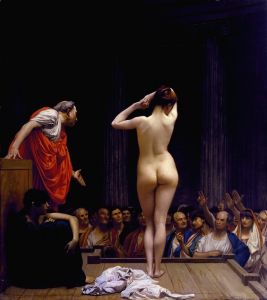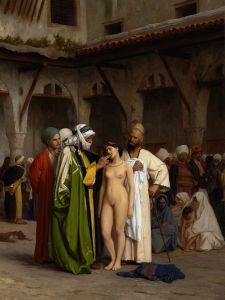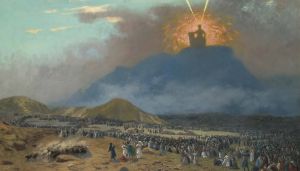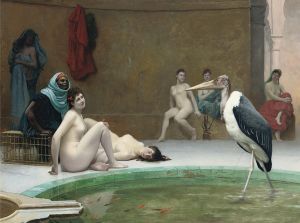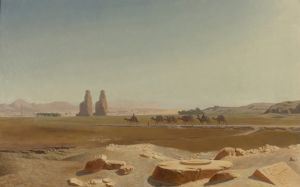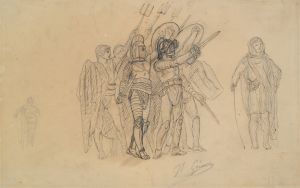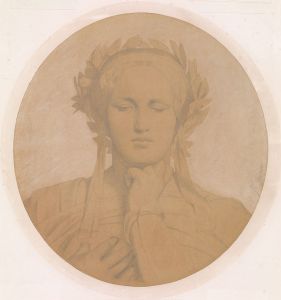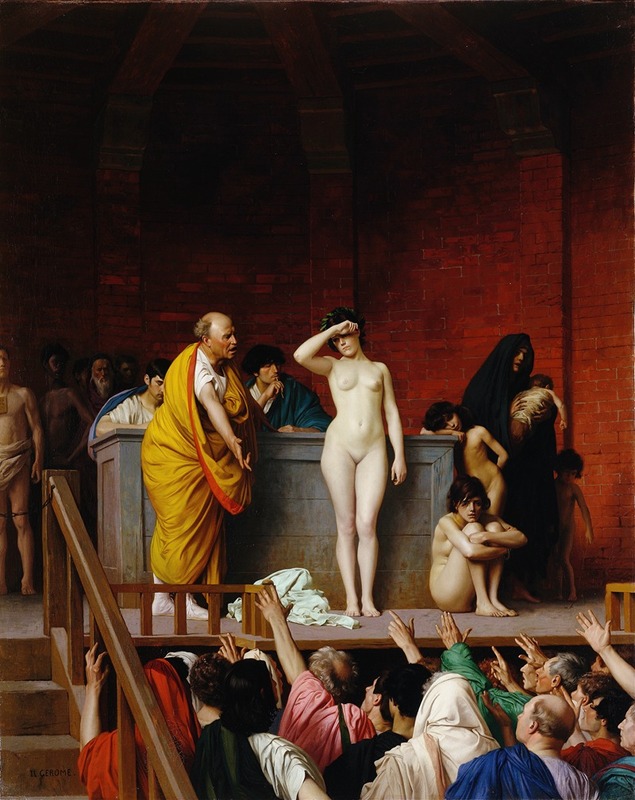
Slave Market in Ancient Rome
A hand-painted replica of Jean-Léon Gérôme’s masterpiece Slave Market in Ancient Rome, meticulously crafted by professional artists to capture the true essence of the original. Each piece is created with museum-quality canvas and rare mineral pigments, carefully painted by experienced artists with delicate brushstrokes and rich, layered colors to perfectly recreate the texture of the original artwork. Unlike machine-printed reproductions, this hand-painted version brings the painting to life, infused with the artist’s emotions and skill in every stroke. Whether for personal collection or home decoration, it instantly elevates the artistic atmosphere of any space.
"Slave Market in Ancient Rome" is a painting by the renowned French artist Jean-Léon Gérôme, created in 1884. Gérôme was a prominent figure in the 19th-century academic art scene, known for his meticulous attention to detail and his ability to capture historical and exotic subjects with striking realism. This painting is one of several works by Gérôme that explore themes of antiquity and the human condition.
The painting depicts a scene set in ancient Rome, focusing on the grim reality of the slave trade during that era. Gérôme's work is characterized by its historical accuracy and attention to detail, and "Slave Market in Ancient Rome" is no exception. The composition features a group of figures in a Roman architectural setting, with a central focus on a female slave who is being inspected by potential buyers. The expressions and postures of the figures convey a range of emotions, from indifference to curiosity, highlighting the dehumanizing nature of the slave market.
Gérôme's interest in historical subjects was influenced by his travels and studies. He was known for his extensive research and use of historical references to ensure the accuracy of his depictions. In "Slave Market in Ancient Rome," the artist employs a neoclassical style, characterized by precise lines, smooth surfaces, and a clear, balanced composition. The painting's color palette is subdued, with earthy tones that enhance the somber mood of the scene.
The painting reflects the 19th-century European fascination with ancient Rome and the broader trend of Orientalism, where Western artists depicted Eastern and ancient cultures through a lens of exoticism and romanticism. Gérôme's work often sparked discussions about the representation of historical and cultural subjects, and "Slave Market in Ancient Rome" is no exception. It invites viewers to reflect on the moral and ethical implications of slavery, both in ancient times and in the context of Gérôme's own era.
Jean-Léon Gérôme's works, including "Slave Market in Ancient Rome," were well-received in his time, and he was celebrated for his technical skill and ability to bring historical scenes to life. However, his work has also been critiqued for its portrayal of sensitive subjects and the potential for reinforcing stereotypes. Despite these critiques, Gérôme remains a significant figure in art history, and his paintings continue to be studied for their artistic merit and historical context.
"Slave Market in Ancient Rome" is housed in a private collection, and as such, it is not as widely accessible as some of Gérôme's other works. Nonetheless, it remains an important piece within his oeuvre, exemplifying his mastery of historical painting and his engagement with complex social themes. The painting serves as a reminder of the enduring impact of art in shaping our understanding of history and human experiences.





